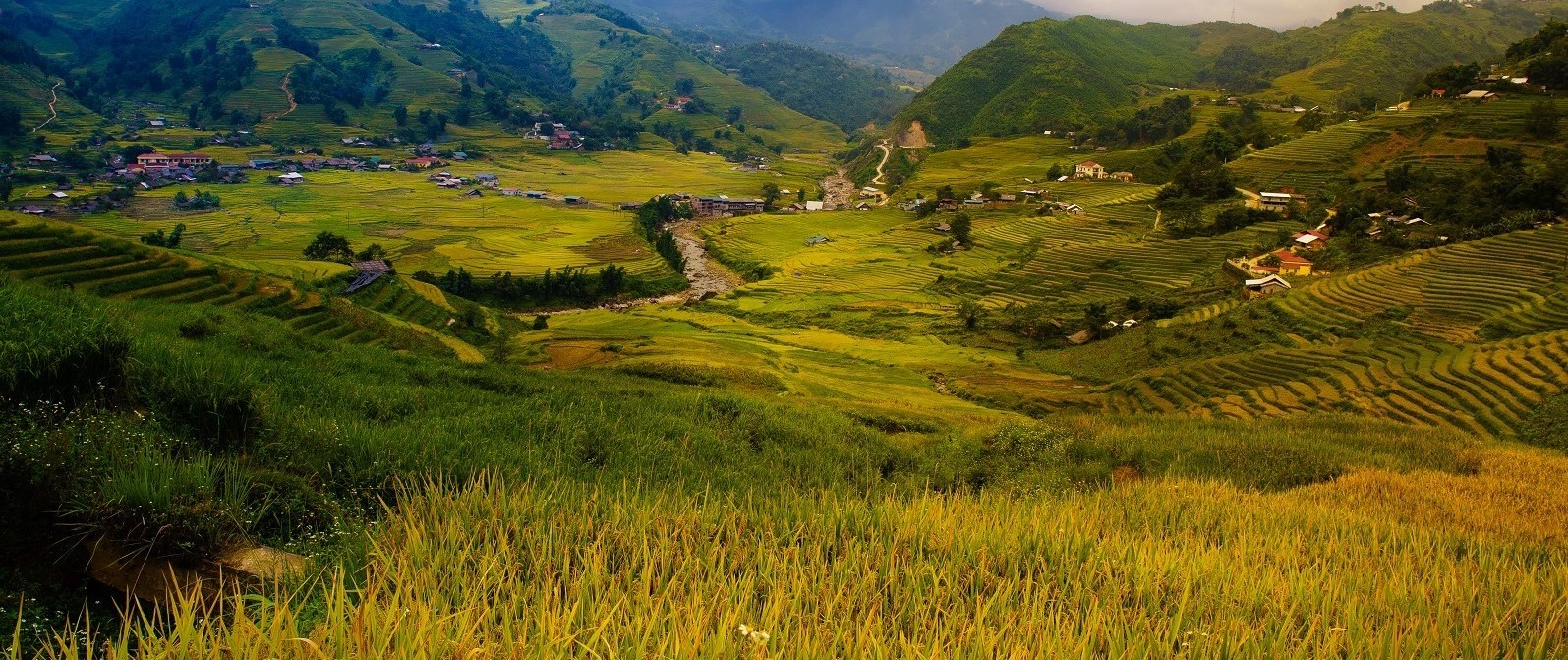Sapa is one of the most attractive destinations on Vietnam’s tourism map. If you are planning to go on a vacation in Sapa, the first thing to bear in mind is the helpful information and tips supporting your trip effectively.
Time to visit Sapa
The best period of time to travel to Sapa is from September to November or March to May when skies are more likely to be clear. In this time, the weather is mild, sunny and dry in daytime and cold at night.
In April – May, Sapa is filled with colorful blooming flowers and green fields. Travelling to Sapa is a great chance to see picturesque terraces in late August and early September, or to watch cherry blossoms after Lunar New Year, Tet.
In winter it is freezing at night especially in northwest, but tourists can see sunrise on high valley in the early morning with occasionally romantic snowfalls. However, this is the period when Sapa is crowded with travelers. Thus, to enjoy a quiet and peaceful countryside, you should not get there at that time.
Luggage to bring
If traveling frequently, you should choose a small-sized and high-quality suitcase capable of being stuffed into the luggage compartment and containing clothes and personal belongings of 2-5 days.
What is more, only dark brown and black footwear should be carried. Also, it may turn cold in the evening so you ought to bring thin coats in summer or scarf, gloves and woolen hat in winter. In case of weather changing, raincoats and umbrellas should be required.
Tourist destinations in Sapa
A tourism map of Sapa should be bought firstly at tourist agents or counters selling tickets to Ham Rong Mountain so as to determine the specific route and schedule.
– Ham Rong, Sliver Waterfall, Cau May, Cat Cat Village, Ta Van, Ta Phin
– Mount Fansipan– the rooftop of Indo-Chinese
– Bac Ha Market, going through Ha Khau border gate to enter China.
Food and Drink
Food price in Sapa is not high but you should still ask ahead of eating. At night, tourists flow in the streets to try cassava wine and unique grilled dishes such as grilled eggs, grilled pig intestine and stomach, chicken, baked purple sweet potato and bamboo-tube rice.
As a cold region, Sapa is particularly famous for specialties which are kinds of temperate vegetables, for example cauliflower, broccoli, red radish, chayote and so on. Especially “ngồng”, top stem of some vegetables, fried with garlic or some kinds of meat is very delicious. In addition, travelers say that enjoying boiled chayote here in Sapa is the best. Sapa is also well-known for the pig meat “Lon Cap Nach” tasted with Sapa apple wine.
Sapa is a mountainous district but has specialty from fish. Sapa stream fish, which is finger-sized on average or baby wrist-sized in maximum, are fried crisply and tasted with beer. Besides, tunas and sturgeons, two kinds of cold-water fishes recently raised in Sapa, are fascinating.
Shopping and prices
It is forewarned that you should not purchase ganoderma and Notoginseng along the road to Ham Rong because they are originated from China and not so good as advertised but with high price.
Tourists can buy souvenirs at the night market nearby the foot of the church but have to remember to bargain. Bare in mind that kinds of brocades which are colorfully eye-catching are derived from China.
Hope you have an exciting vacation in Sapa!
Huyen Tu/Sapa Tours

